





- October 03, 2024
- 127 Views
The food delivery application has innovative, game-changing features that will transform the industry from the bottom to the top. According to Statista, the online food delivery market in the UAE has experienced significant growth and is expected to generate revenue of US $ 1,122 by 2024. It also reveals that revenue generated from online food delivery applications will hit $96.5 billion by 2027, with a CAGR of 8.9% in the next financial year.
Home to the second biggest online food delivery market behind China, the United States boasted an estimated 350 billion U.S. dollars in revenues in 2024, with more than 95 billion dollars generated in the meal delivery segment. By 2028, the market is forecast to grow even further, exceeding the 500-billion mark, as the online grocery and meal delivery segments continue their upward climb—according to a report by Statista
As you begin a new journey of food delivery application, gathering all the market information, dynamics, and success rate is crucial. Doing a competitive analysis reflects the best business mindset, which motivates them to go ahead in the journey. We appreciate you being here to pick the correct information for your coming successful project.
-
Table of Contents
-
- 1. Major Aspects of Building a Food Delivery App.
- 2. Market Research and Analysis.
- 3. Select a Well-Suited Business Model.
- 4. Defining Core Features Of Applications.
- 5. Build the Exceptional UI/UX Designs for the ease of end-users.
- 6. Development Process while Building a Food Application.
- 7. Launching the Food Application.
- 8. Avoid Falling for Superficial Technical Details
- 9. Collaborating with Right Tech-partner Plays a Crucial Role
- 10. Conclusion
- 11. FAQs
-
Major Aspects of Building a Food Delivery App
There is massive competition in the market, which requires careful planning and informed decision-making. Understanding a detailed step-by-step guide is essential to navigate the challenges and reduce risks. This guide explores crucial aspects like market research and analysis, selecting the suitable business model, identifying core app features, partnering with suitable tech partners, crafting an exceptional UI/UX design, and executing the development process. Adopting these steps will set the stage for a successful food delivery launch.

Market Research and Analysis
What if the food suggestion you get while using your mobile is a part of the marketing? Yes, it is. Sometimes, you don’t crave the specific food, but marketers trigger the things so that you get that craving. It is a part of brilliant food marketing. Food delivery apps for businesses are the only solution to expanding local and magical food worldwide. They lay the foundation of cultural exchange, stimulating the feeling of brotherhood among people living in different geographical conditions and resource availability.
As per Statista, In 2024, nearly three billion consumers globally used online food delivery services (grocery and meal delivery). Looking at the regional breakdown, Asia remains, by far, the biggest market for online food delivery, with approximately 1.84 billion users in 2024. Europe is second, with around 355 million online food delivery users.
Market research and analysis help predict future events and innovations. Easy navigation through the competitor strategy, acceptance of advanced technology into the product, automation, and exceptional user interface can boost CTR (click-through rate) to build the business firm. Therefore, complete and deep market research is an advanced weapon that can stay in the market for a long time, creating multiple levels of profits.
Projected Food Delivery Market Size 2023 to 2029 (in bn$)

A Billion Dollar Industry: Food Application
The data shows that the food market is going to show robust growth. In the USA, 50% of users use Ubereats and DoorDash applications to order food. The USA has registered $17.1 billion in revenue in food delivery app businesses.
Select a Well-Suited Business Model
Once the market research is done, choosing the business model is a priority. The model you select severely impacts your operational costs, strategy, revenue base, and scalability. Let’s discuss some of the models, or you may develop your creative ideas to gel with.
- Aggregator Model: In this model, you collaborate with numerous restaurants, providing a wide selection of options and a logistic-focused approach. You concentrate more on the restaurant's delivery services.
- Cloud Kitchen Model: A cloud kitchen is a centralized food production facility where multiple restaurants or brands operate simultaneously. Cloud or ghost kitchens operate solely for delivery or takeout services. These kitchens are in non-prime real estate areas since they don’t require foot traffic or a physical storefront.
- Restaurant-to-Consumer Delivery: This is the most famous approach model brands use to establish their strong market presence. It aims to provide food from particular restaurants through their applications. One well-known example is Domino's; knowing it is also registered on other food delivery platforms, it has a platform from which people can order food within a second.
- Hyper-Local Delivery: Hyper-local delivery focuses on fast, efficient service within a small geographical area, often within a few kilometers. By partnering with local vendors and using real-time tracking, food delivery apps can reduce wait times and improve customer satisfaction. This model enhances delivery speed, cuts costs, and aligns with consumer preferences for sustainability and convenience.
- AI-Driven Predictive Ordering: AI-driven predictive ordering uses data like past orders, time, and weather to anticipate customer needs. This helps food delivery apps offer personalized suggestions, increasing convenience and order frequency. For businesses, it improves inventory management, reduces waste, and streamlines operations by preparing popular items in advance.
Numerous business models may suit you. Which one you choose depends on the market situation, your personal opinions, interests, and your profit range.
Defining Core Features Of Applications
After the market research, it’s been important to define the application's core features to leave it in the market to generate revenue. According to the data, 60% of people prefer on-demand food delivery applications. Now, let's explore the core features of food delivery applications. Below is the general feature list; you can add these features to your application to make it competitive and fulfilling.
1. User Profile Management: This allows users to manage their profiles, including personal information, preferences, and order history.
Features
- User Information: Users can easily add their names and manage personal details, such as updating their phone numbers, addresses, and profile pictures.
- Food Preferences: This feature allows users to set their dietary preferences, favorite restaurants, and preferred payment methods.
- Order History: This will give access to past orders, including re-ordering options and the ability to review previous purchases.
User profile management helps provide a personalized, efficient, secure, and well-optimized platform. It also helps control profiles and track order histories smoothly.
2. Registration, login, and account management: It facilitates user account creation login and gives access to profile management.
Features
- Registration: New users can sign up using email, phone number, or social media accounts.
- Login: Provide secure login through email, phone number, or other social media, including two-factor authentication.
- Account Management: Users can manage their account details with simple steps and change their password and login credentials.
It allows the administrator to manage the resources and accounts to cater to the specific needs of the users.
3. Search and Menu Browsing: It enables users to explore the restaurants and food items and filter their orders based on their preferences.
Features
- Restaurant Listings: Display a list of nearly popular restaurants with complete details, ranking, cuisine type, and expected delivery time.
- Filters and Categories: Users can filter by cuisine, price range, and dietary preferences.
- Menu Browsing: A detailed menu for each restaurant will be uploaded with proper descriptions, images, and pricing..
A well-crafted user interface keeps users navigating through the application and finding the best-suited options for them. Menu browsing keeps them engaged and forces them to buy some food by looking through the food details, restaurants, and other options.
4. Order placement and customization: This feature can single-handedly customize the order according to user preferences.
Features
- Cart Management: Users can add, remove, or modify items.
- Order Customization: Options to add special instructions, choose portion sizes, or customize ingredients.
- Order Review: Before placing an order, users can review their cart, apply promo codes, and select payment methods.
The primary benefit of adding these features is that customizing orders helps to provide the best. Adding the order review features allows a restaurant or outlet to improve and understand customers' expectations.
5. Real-time Tracking: It will provide real-time tracking, order status, and seamless delivery procedure.
Features
- GPS Tracking: Live tracking became necessary to check the driver’s location on the map. Delivery Status: Update on order preparation, pickup, and delivery stages.
Adding real-time tracking features provides transparency when receiving the product. When a customer gets an estimated delivery time and can easily track that, it ultimately improves customer satisfaction, retaining them from going anywhere.
6. Payment Integration: This allows multiple secure payment methods for effortless transactions.
Features
- Multiple Payment Options: For seamless transactions, users should be provided with multiple credit/debit cards, digital wallets, net banking, and COD methods.
- Secure Transactions: End-to-end encrypted and tokenized to ensure safe payment processing.
- Payment History: Users can view past payments, download invoices, and manage saved payment methods.
Multiple payment modes are necessary to facilitate smooth transactions, and end-to-end encrypted methods foster secure translation, which motivates others to use the online mode or order the tangy taste of the food.
7. Push Notifications: Keeps users informed with timely updates and promotional messages.
Features
- Order Updates: Real-time notifications about order confirmation, preparation, and delivery status.
- Promotional Offers: Alerts about discounts, special offers, and loyalty rewards.
- Reminders: Notifications for abandoned carts, repeat orders, or special events.
This push notification keeps you updated. It generally helps to increase the conversion rate, drive retention, and improve brand visibility. Zomato, for example, has gained more attention on social media due to its funny and innovative push notifications.
8. Rating and Reviews: It enables users to share their experiences and read feedback from others.
Features
- Customer Feedback: Users can rate their experience with the restaurant and delivery service.
- Review System: Option to leave detailed reviews, including comments on food quality, service, and delivery.
- Rating Display: Aggregated ratings and reviews are displayed for each restaurant, helping users make informed choices.
Opening a feedback window keeps the system panic-free and boosts reliability and transparency among users. The way we deliver our services is also reflected in the rating display, which sometimes motivates us to do more or encourages us to look after the customer in more detail.
Customer Support: Provides users with assistance through various support channels within the app.
Features
- In-app Chat: Direct messaging with customer support for quick issue resolution.
- FAQs: A comprehensive list of frequently asked questions covering common issues.
- Help Center: Access to guides, tutorials, and support articles for troubleshooting and assistance.
A helpdesk can answer hundreds of queries with a single click. From there, customers can also understand us practically and how we serve when our customers are messed up with problems.
These features are essential for creating a comprehensive and user-friendly food delivery application.
Build the Exceptional UI/UX Designs for the ease of end-users
Building a creative and easy-to-navigate design can allow users to utilize the application without irritation. It helps them get intrigued and engaged with the application. Imagine you’ve built the application, but its design is neither exciting nor promising to navigate; will you look back to that again? In such a case, the user will get dropped, as they will lose interest in the application. Therefore, it is necessary to keep an excellent UI/UX designer; the interior and decor of your application are similar to a restaurant.
Development Process while Building a Food Application
The development process incorporates front-end, back-end, and third-party integrations. Brainstorm ideas about what framework, tools, and technology would be suitable for building the platform from scratch. For the backend, design a database; first, set up the database schema to manage users, orders, restaurants, and delivery details. Develop APIs to handle communication between the front end and back end. Next, go for authentication and authorization and implement secure user authentication methods like OAuth or JWT tokens.
For the front end, develop the Android, iOS, or cross-platform app using React Native, Flutter, or native development languages. Ensure the app is responsive and smooth on different screen sizes and devices.
You can keep all these technicalities or stay in touch with the technical team to build robust software that serves the needs at the best level, ensuring a 100% satisfaction rate.
Launching the Food Application
Launching a food application is a critical phase that requires strategic planning and careful execution to succeed in the market. At CodeAegis, we understand that anxious feeling before the successful launch, as we have also been in such situations where the heart rate was extremely high. It took collective efforts to launch an on-demand food application with full potential. With years of expertise in this domain, we have successfully launched a food delivery application to serve its customers above all.
If you have read it to this point, you might have gathered some insightful information to concentrate on and can plan to build food applications like Zomato, Uber Eats, and many more. Don’t delay contacting us to see how we can best serve your ideas.
Avoid Falling for Superficial Technical Details
When developing a food delivery application, it's easy to get caught up in buzzwords and flashy technologies like AI, machine learning, or blockchain. While these terms sound impressive, it’s important to focus on what actually enhances the functionality of your app and the user experience. Features like AI-driven predictive ordering or real-time GPS tracking should only be implemented if they directly contribute to the app's usability, efficiency, and value for your customers.
Instead of overloading your application with superficial technical details that don’t add real value, focus on clear, impactful features that solve problems. For example, AI-driven predictive ordering is valuable only when it truly helps users make faster, more personalized choices. The goal should always be practical implementation that serves your business needs rather than simply adopting trends for the sake of appearances. Keep the technical jargon minimal, and ensure every feature has a clear purpose that benefits both your operations and your users.
Collaborating with Right Tech-partner Plays a Crucial Role
While building a food delivery application, wisely choosing the right delivery app development company became necessary. This complex application requires extra attention and expertise to cook the codes well and integrate them with the perfect balance of flavors to come out as a great victory.
A well-experienced and niche-oriented development company would significantly impact your application delivery success. So before the final selection, keep the mentioned points in mind;

- Experience: Check with the company business portfolio and thoroughly check the delivered projects and their quality. It will provide a more comprehensive view of the company's work efficiency and quality standards.
- Expertise: Once you check the experience, check the team's strength and expertise. Diverse expertise will help your project be delivered innovatively and boost its efficiency as it is developed under the supervision of experts.
- Flexibility: Application development is a long and complex process. Make sure the food delivery application company provides enough flexibility for revisions. Adopting the change will also give the client a crystal-clear viewpoint on reviewing the application from a market standpoint.
- Budget: First things first, this development procedure is aligned with the budget allocation. Fix the budget and sign the NDA and other documentation to ensure a safe deal at the closing number.
- Availability: Before delving into the project, ensure the experts' availability in the client's time zone to foster smooth communication and coordination among them.
- Post-Development Support: After development ends, the application will be ready to be launched. However, it is better to check the company's post-development support. It helps scale the business and understand the market dimensions practically.
Conclusion
In a nutshell, a food delivery application incorporates extensive strategic planning, market research, brainstorming on business ideas, selecting the preferred tech companies, a keen eye on development, designing procedures, and, most notably, the launch day. The whole journey is filled with excitement, revisions, reviews, meetings, productivity, and the vision, which is going to become a reality soon.
Build the food application to learn your customers' tastes and preferences, including dislikes, and understand the psychology of food businesses.
Frequently Asked Questions
What features should I include in my food delivery app?
To build a successful application, you can efficiently add features to your food delivery apps, such as user registration, profile management, payment gateway integrations, and more. You can also be open to new innovative features to differentiate your product from others.
How much does it cost to develop a food delivery app?
The cost of a food delivery mobile application depends on the type and complexity of the project. However, we can estimate the cost, which would, on average, range from $10,000 to $100,000 or more. You can coordinate with our professionals for specific quotes.
How long does it take to build a food delivery app?
The timeline for developing a food delivery app can range from six months to one year, depending on the type, complexity, platform (native or cross-platform), and other factors.
About Author
You May Also Like

Having a mobile application is no longer a luxury—it's an essential tool for instantly capturing the market! To stand out in the rental businesses, a company must adopt tech-driven preferences

Can you give thought to a week without coffee breaks at cafes? It might not be possible, but earlier, having coffee outside the house was never a thing. So how the tables have changed the corners?

Blockchain technology and web development are two powerful innovations that have the potential to transform our world. While they may appear distinct, they share similarities and can work together to

Are you aware that the world is going through a significant shift in the way we make payments? According to a recent report by Deloitte, the total value of digital payments worldwide is estimated to r

You’ve likely heard the term “Artificial Intelligence” or AI until now—It’s 2025. But have you ever paused to consider how deeply AI has woven itself into the web of our

Do you want to build a simple app for your business? Do you want to create an app that enhances the experience of users who play games on their smartphones? Whatever your reason, I have created this g

Necessity is the mother of invention origin! Have you ever wondered when an entrepreneur decides to start a business? When demand is high and supply is low, opportunities arise. But there’s mor

Table of Contents 1. What is ChatGPT? 2. What Are the Top Benefits of ChatGPT? 3. How Does ChatGPT Work? 4. Challenges With ChatGPT 5. ChatGPT and the Future of AI 6. Final Thoug

Mobile applications have dominated the market, helping businesses to reinforce their full potential. Not only for the rental business, but mobile apps play a critical role in establishing a solid foun

Picture this - a world where business transactions are seamless, secure, and transparent. This might have seemed like a distant dream before the advent of cryptocurrencies and blockchain technology, b

The world is digitizing at a very rapid pace, and in such a scenario, real estate businesses must also go digital to stay ahead of the competition. One of the best ways to digitize your business is de

Sipping coffee and thinking of a startup has always been trendy. Similarly, hanging out with friends and promising them to start a business someday feels refreshing. Did you know that several success
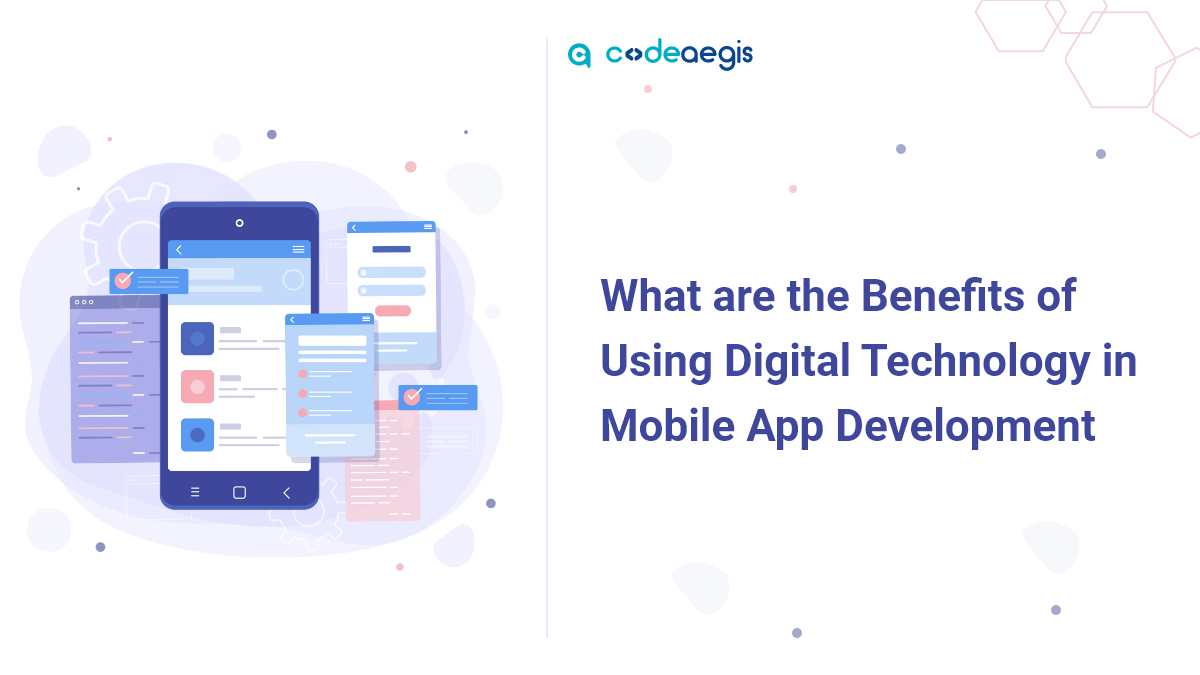
With the ubiquity of smartphones and tablets, it only makes sense that mobile app development - which is the process of creating applications for smartphones and tablet devices - is becoming more popu

The United Arab Emirates (UAE) is flourishing as the hub for blockchain technologies, transforming the digital ecosystem and having a forward-thinking government to maintain its competitive edge. Gove

Do you know what digital transformation with AI is and how it can impact your business? Organizations today are under pressure to digitally transform to stay competitive. This digital transformation

Technology has come a long way in the past decade, and augmented reality (AR) is one of the most exciting development fields. AR technology superimposes digital content into the real world, creating a
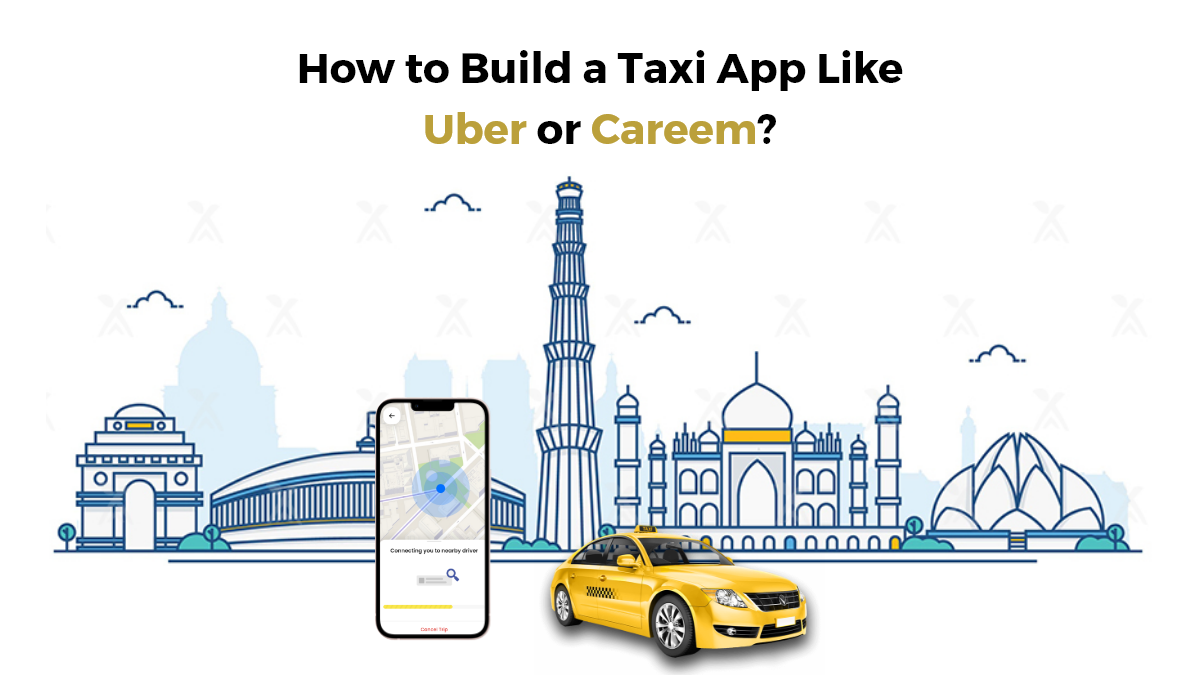
Gone are the days when people used to wave down a taxi on the street or wait for one at the airport. With the advent of technology, people can now book a taxi with just a few taps on their smartphones

The startup space is fast, competitive, and harsh. According to Exploding Topics, about 90% of startups fail. What would be the reason for that? There would be multiple reasons for startup failure, bu

Businesses after COVID are going through several changes, and the food industry is no different. Restaurants that have been doing dine-in are now struggling to keep up with the demand for delivery and

By 2024, we all know that technology will be the future. What excites me the most is that technology has covered all the dimensions of businesses, enabling them to attain their potential and efficienc

Are you looking to design a mobile app in 2025? Mobile application development is an ever-changing field, and it can be hard to keep up with the latest trends and best practices. But with this guide,

Over-the-top (OTT) platforms like Disney Plus, Netflix, and Prime Video have gradually captured attention as traditional TV-watching methods have faded. Throughout the year, OTT platforms have created

Mobile applications play a vital role in the development of multiple businesses in this digital world. Most companies are investing in iOS app development to strengthen their market appearance and dra

Nowadays, the digital presence has revolutionized business dynamics. App development is not just evolving but breaking traditional barriers and emerging as strong and progressive solutions. With robus

It's no secret that the digital world has transformed many aspects of our lives, and it is only going to continue changing in ways we can't even imagine yet. To help businesses keep up with this rapid

The UAE, and Dubai specifically, has really evolved from just a real estate and tourism market, and is quickly becoming a hub for digital innovation and online commerce. With the continued investment

Blockchain technology is becoming the heart of multiple industries. It is robustly securing businesses through its core value, making it the first pick-up in the generative AIs. The blockchain is the

The world of gaming is rapidly evolving, and the latest buzzword is "metaverse." The term refers to a virtual world where users can interact with each other and digital objects in real time, using imm

The introduction of online payment applications has changed how people perform financial transactions. A mobile phone with a banking app lets you quickly resolve various financial matters. Ta

Social media apps are all the rage these days. People use them to connect with friends and family, to learn about new products and services, and to stay up-to-date on the latest news. But as popular a

Do you run your own business and want to build an Android app? If yes, you must know about the latest technology trends playing a significant role in the android app development process. Technology i

Imagine a world where you can speak your thoughts and desires, and the digital realm responds promptly, seamlessly integrating into your daily life. Whether you want to search for information, contro

An extensive background working in Tech, Travel, and Education Industries. Currently involved in entire business operations process: Benefits strategy and implementation, systems integration, Human Re

Table of Contents 1. What is Flutter? 2. Why Choose Cross-Platform Development? 3. Why is Flutter the Best Platform to Make Cross-platform Applications? 4. How Much Does it Cost to

DeFi is a new kind of investment that’s taking the world by storm. So what is it? Essentially, DeFi is a digital asset class that allows you to invest in cryptocurrencies and other digital asset

Google released Android 13 beta 4 to the public, and with it comes a slew of new features and updates. In this article, we'll walk you through everything you need to know about the latest version of A

Prime Minister Narendra Modi eventually launched 5G in India at the 6th edition of the IMC (India Mobile Congress). Reliance Jio and other telecom organizations documented the various use cases of 5G
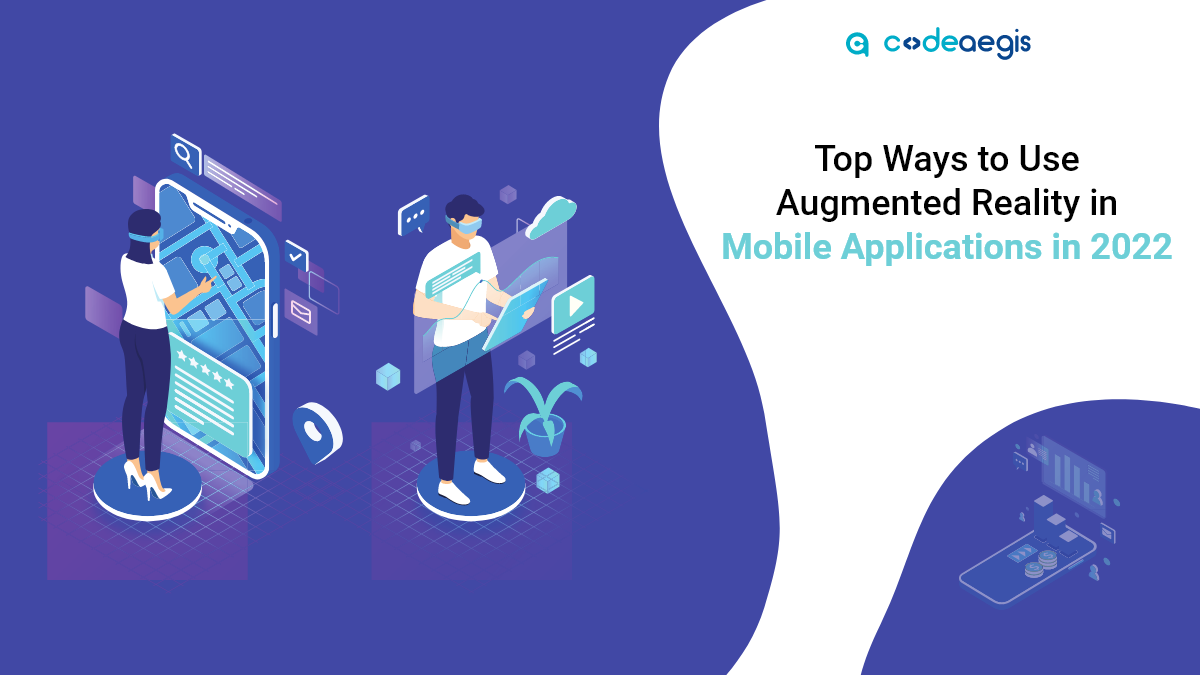
Augmented Reality and Virtual Reality are the two leading buzzwords in the technology era. What began as a completely new, significantly different technology has rapidly revolutionized into something

The mobile app market has grown to a staggering size, with over 1.8 million apps available in the Google Play Store and Apple App Store combined. Mobile apps have become a necessity for people worldwi

The two hottest frameworks in the mobile app development world are Flutter and React Native. They’re both cross-platform solutions that allow you to write code once and deploy it to Android and

As blockchain technology continues to evolve, so too does the landscape of projects built on its foundation. The worldwide Blockchain market is predicted to expand at a CAGR of 42.8% (2018-2023), dire

Decentralized Finance (DeFi) is a modern and evolving region of finance that is less centralized and more open to innovation and collaboration. DeFi enthusiasts laud its prospect of disrupting convent
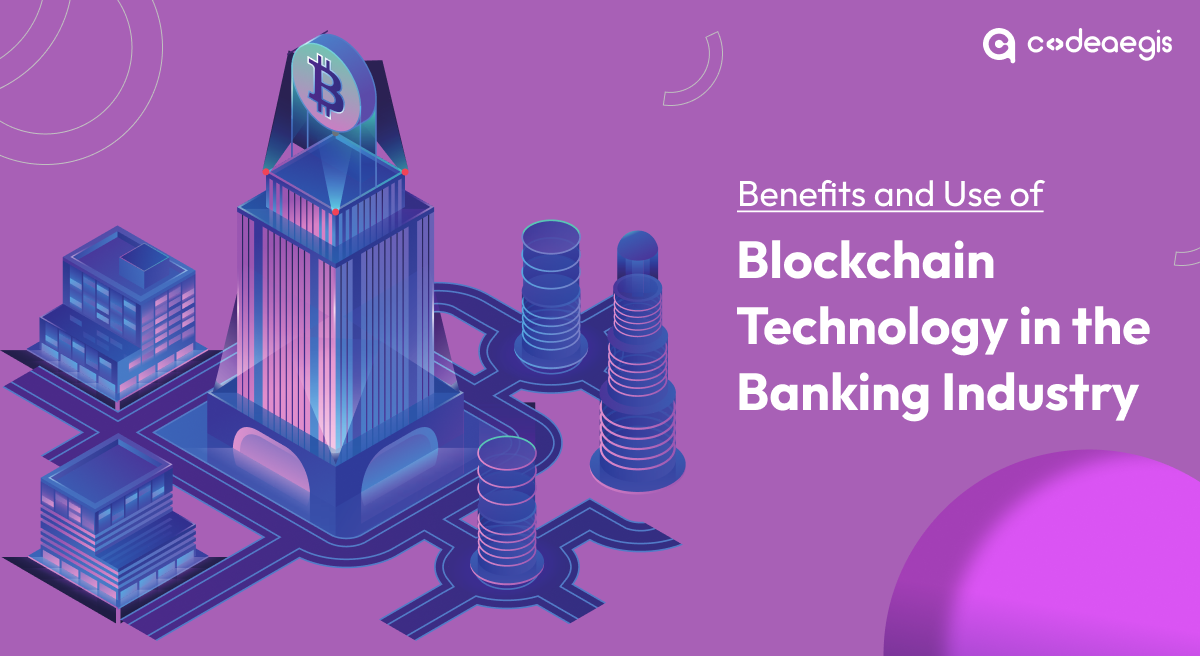
Picture this: a world where traditional banking transforms into a cutting-edge, efficient, and transparent system that leaves everyone in awe. Blockchain, often met with skepticism and uncertainty, is

In the last few years, wearables have become increasingly popular. Fitness trackers, smartwatches, and even smart glasses are becoming more and more commonplace. And as the technology improves and bec

Imagine a classroom where history comes alive in the 3D model of historical events. Biology students can explore the unique complexities of a cell as they have practiced it with real-world examples, a

The launch of Node.js 19 is now available! It substitutes Node.js 18 as the current launch line, with Node.js 18 being encouraged to long-term support (LTS) next week. What do these two launches mean

The healthcare industry is one of the most rapidly changing and growing industries worldwide. Mobile devices and apps have drastically changed how providers and patients interact and communicate.So, i

Lately, the tech world has been abuzz with talk of the Metaverse, a groundbreaking concept that promises a shared virtual space where people can interact and engage with one another. This futuristic i

Blockchain technology has been a hot topic recently due to its potential to revolutionize various industries. Blockchain is a distributed ledger technology that ensures transparency, security, and dec

Want to establish a new business or improve an existing one? You should consider using blockchain technology Being a distributed database, Blockchain allows for secure online transactions. This techn

Rental businesses are gaining market share by offering essential services that help other businesses minimize downtime and maximize profitability. This growth trend is particularly strong in the servi

Generative AI? Is this still a question mark to you? If you don’t know what generative AI does, that would be a fair question, but it was not if you said that you haven’t interacted with

As we head into the future, more and more people are looking to find ways to improve their healthcare. And with good reason - healthcare can be expensive, and it can be difficult to get the right care

If you’re planning to enter the fast-growing fantasy sports market, one of the most critical aspects considered is “What will it cost to build a fantasy sport that stands out and drives t

In recent years, the gaming industry has seen a surge in popularity, with many gamers turning to online gaming platforms and console games in order to escape reality. With so many people playing video
Have you ever felt like you’ve attracted 30% more consumers to your shopping sales by using a technical hack to revive your shops? It would work like a person was crossing through next to your

Things have changed dramatically over the years with new opportunities, techniques, and future advancements. Real estate is the best industry to invest in, though the procedure sometimes irritates. Me

Depending on what niche you’re in, video chat apps are becoming increasingly common in the world of business and technology. Whether it’s a small startup company or a multinational corpora

When it comes to developing an app, there's a lot to consider. Not only do you need to create a user-friendly interface and design, but you also need to make sure your app is able to meet the demands

If you’re in the healthcare industry, then you know that data privacy and security are of utmost importance. In order to protect patients’ information, the Health Insurance Portability and

Businesses these days are looking to have an edge over their competition by having a strong online presence. A website is not enough anymore, and many companies are turning to mobile apps as a way to

Building an App that promotes businesses and acts as a right hand has a separate fanbase! Creating an app for the business plays a fundamental role in elevating business operations, making seamless c

Over the past decades, the healthcare sector has continuously expanded its wings, moving from traditional to advanced technological processes. This evolution is driven by the sector's unwavering commi

Is your business still relying on off-the-shelf software solutions that don’t efficiently meet your unique business requirements? If your mind instantly says yes, then let’s explore why in

Nowadays, the financial industry has encountered massive digitization, and mobile apps play a significant role in it. There are a wide variety of money transfer apps available, catering to the needs a

With the advent of technology, the financial industry has experienced a massive transformation in the past few years. Fintech applications have revolutionized the way we manage and invest our money.

Did you know that Dubai's prime residential market is projected to experience the world's strongest growth in 2025? The Middle East is buzzing with opportunities, especially in the realm of mobile app
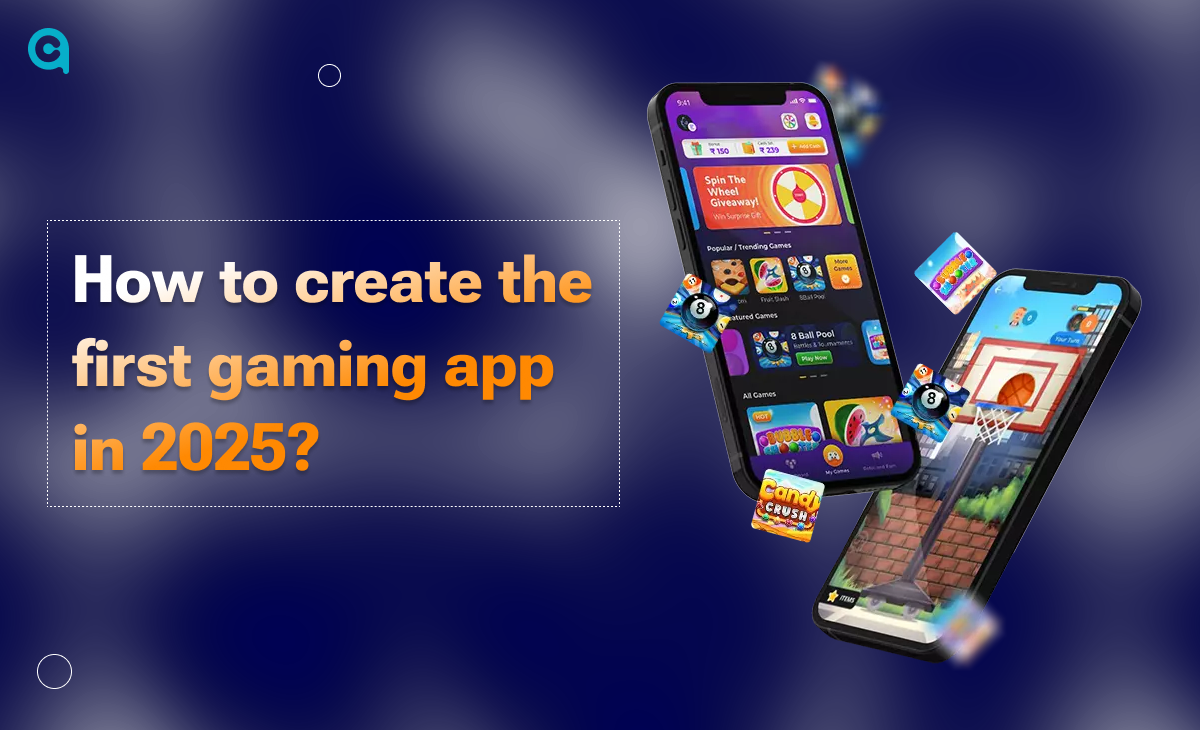
Application development is essential to fostering business efficiency while accepting new changes. Depending on the specific requirements, 85% of businesses rely on software development solutions to s

Mobile app development is quickly becoming a necessity for businesses. As the world becomes increasingly digital, companies of all sizes rely on mobile apps to reach customers and increase customer en

IPTV has established itself as a prominent technology that is gaining traction with its comprehensive platform applications. Unlike traditional methods like satellite, cable, or TV, IPTV has accelera

Will DeepSeek and ChatGPT collide in the race for AI Supremacy? DeepSeek and ChatGPT are at the center of a heated debate that tends to shape the future of AI. The real-world implications and effecti
The beacon technology market was valued at 519.6 million U.S. dollars in 2016, and it was estimated to increase at a CAGR of 59.8% to reach about 56.6 billion U.S. dollars in size in 2026. Throughout

The food delivery application has innovative, game-changing features that will transform the industry from the bottom to the top. According to Statista, the online food delivery market in the UAE has

Australia is moving towards a big shift at a global level. It is strengthening the ties at the B2B level and becoming a hub for innovation, sustainability, and digital transformation. Backed with a r
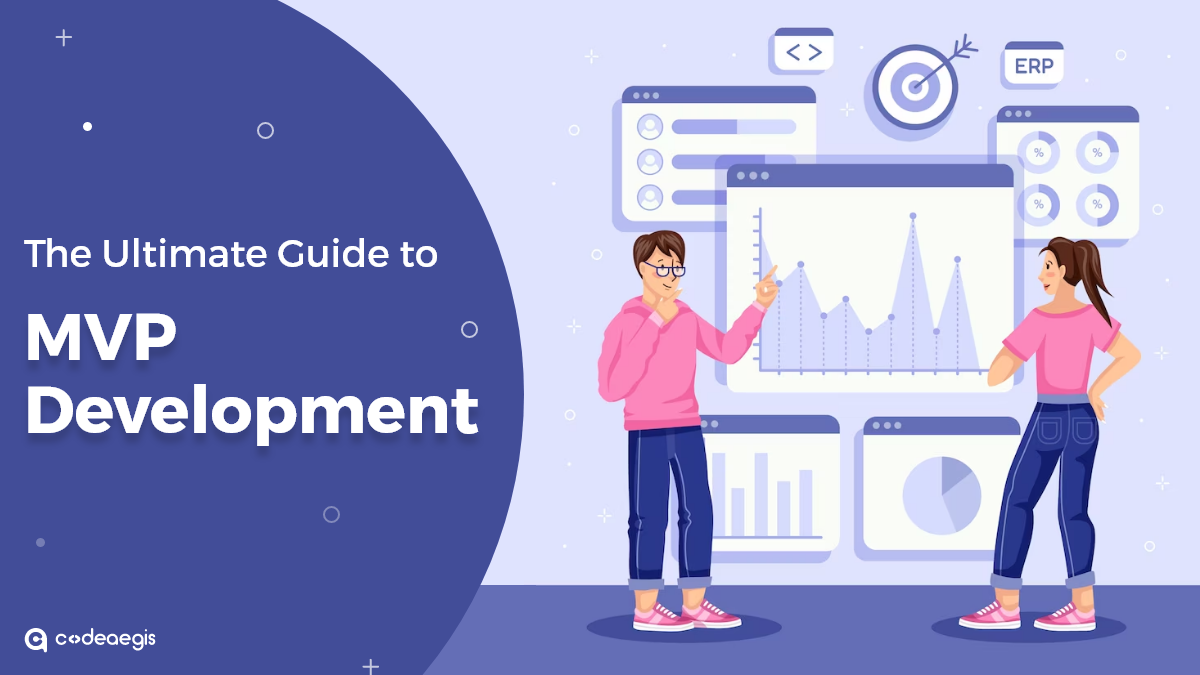
As the world of startups becomes increasingly competitive, building an MVP is crucial for entrepreneurs looking to test their ideas and launch successful businesses. By creating a minimum viable produ

The rise of online video streaming services has revolutionized the entertainment industry, prompting businesses worldwide to explore the possibility of launching their own platforms. With giants like

In today's digital world, businesses must keep up with ever-increasing consumer expectations and find new ways to engage their audience. That's where Progressive Web Apps (PWAs) come in. PWAs are a r

Summary: Car rental apps have become the heart of the business, stimulating growth, efficiency, and customization. They offer updated rental methods to stay relevant with Gen Z and Millennials, who ar

The gaming industry is proliferating with the advent of smartphones and PCs. Every age group, from children to adults, is well-engaged and fond of online gaming. The rapid evolution of mobile gaming a

The mobile app market has grown to a staggering size, with over 1.8 million apps available in the Google Play Store and Apple App Store combined. Mobile apps have become a necessity for people worldwi

Have you ever found yourself in a situation where you desperately needed a product or service but didn't have the time or energy to go out and get it? Well, fear no more because on-demand delivery app

Hiring a team of remote developers can be a daunting task, but it doesn't have to be. With a little bit of planning and the right approach, you can find the perfect candidates to build your dream prod

When it comes to mobile app development, one of the most important things you need to consider is the prototyping process. This will allow you to create a working model of your app so that you can tes
Leave a Reply
Your email address will not be publishedDO YOU HAVE ANY PROJECT
Let's Talk About Business Solutions With Us
India Address
57A, 4th Floor, E Block, Sector 63, Noida, Uttar Pradesh 201301
Call Us
+91 853 500 8008
Email ID
[email protected]



.jpg)







